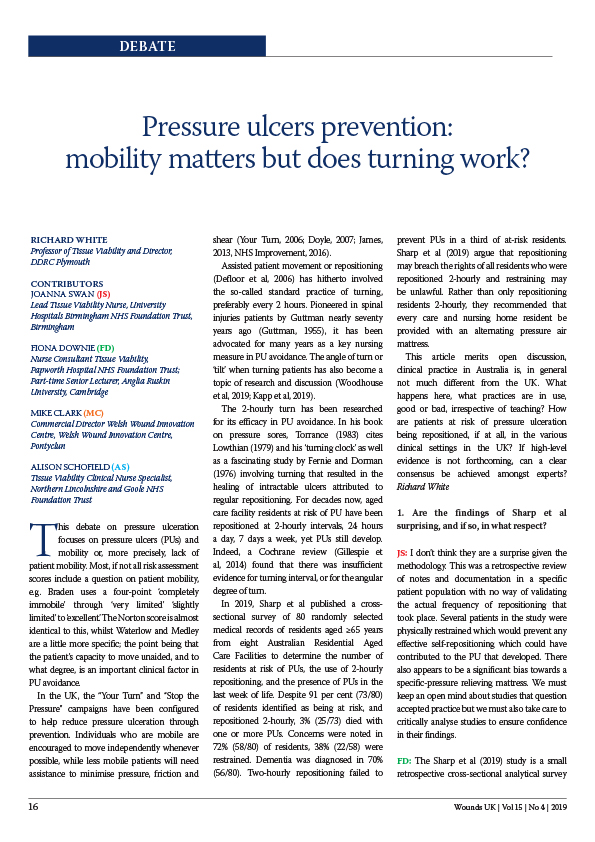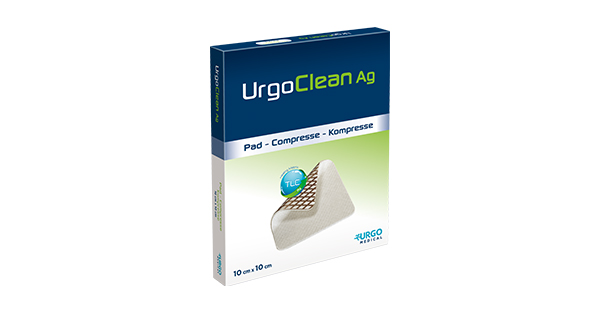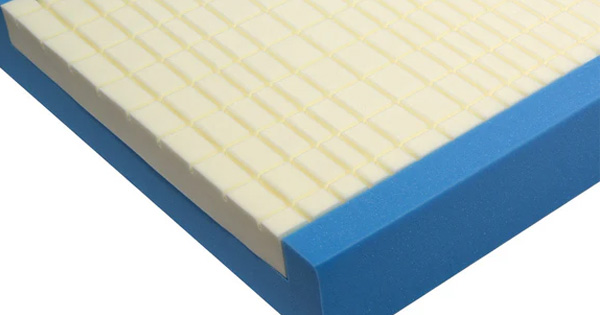This debate on pressure ulceration focuses on pressure ulcers (PUs) and mobility or, more precisely, lack of patient mobility. Most, if not all risk assessment scores include a question on patient mobility, e.g. Braden uses a four-point ‘completely immobile’ through ‘very limited’ ‘slightly limited’ to ‘excellent’. The Norton score is almost identical to this, whilst Waterlow and Medley are a little more specific; the point being that the patient’s capacity to move unaided, and to what degree, is an important clinical factor in PU avoidance.
In the UK, the “Your Turn” and “Stop the Pressure” campaigns have been configured to help reduce pressure ulceration through prevention. Individuals who are mobile are encouraged to move independently whenever possible, while less mobile patients will need assistance to minimise pressure, friction and shear (Your Turn, 2006; Doyle, 2007; James, 2013, NHS Improvement, 2016).
Assisted patient movement or repositioning (Defloor et al, 2006) has hitherto involved the so-called standard practice of turning, preferably every 2 hours. Pioneered in spinal injuries patients by Guttman nearly seventy years ago (Guttman, 1955), it has been advocated for many years as a key nursing measure in PU avoidance. The angle of turn or ‘tilt’ when turning patients has also become a topic of research and discussion (Woodhouse et al, 2019; Kapp et al, 2019).
The 2-hourly turn has been researched for its efficacy in PU avoidance. In his book on pressure sores, Torrance (1983) cites Lowthian (1979) and his ‘turning clock’ as well as a fascinating study by Fernie and Dorman (1976) involving turning that resulted in the healing of intractable ulcers attributed to regular repositioning. For decades now, aged care facility residents at risk of PU have been repositioned at 2-hourly intervals, 24 hours a day, 7 days a week, yet PUs still develop. Indeed, a Cochrane review (Gillespie et al, 2014) found that there was insufficient evidence for turning interval, or for the angular degree of turn.
In 2019, Sharp et al published a crosssectional survey of 80 randomly selected medical records of residents aged ≥65 years from eight Australian Residential Aged Care Facilities to determine the number of residents at risk of PUs, the use of 2-hourly repositioning, and the presence of PUs in the last week of life. Despite 91 per cent (73/80) of residents identified as being at risk, and repositioned 2-hourly, 3% (25/73) died with one or more PUs. Concerns were noted in 72% (58/80) of residents, 38% (22/58) were restrained. Dementia was diagnosed in 70% (56/80). Two-hourly repositioning failed to prevent PUs in a third of at-risk residents. Sharp et al (2019) argue that repositioning may breach the rights of all residents who were repositioned 2-hourly and restraining may be unlawful. Rather than only repositioning residents 2-hourly, they recommended that every care and nursing home resident be provided with an alternating pressure air mattress.
This article merits open discussion, clinical practice in Australia is, in general not much different from the UK. What happens here, what practices are in use, good or bad, irrespective of teaching? How are patients at risk of pressure ulceration being repositioned, if at all, in the various clinical settings in the UK? If high-level evidence is not forthcoming, can a clear consensus be achieved amongst experts?







